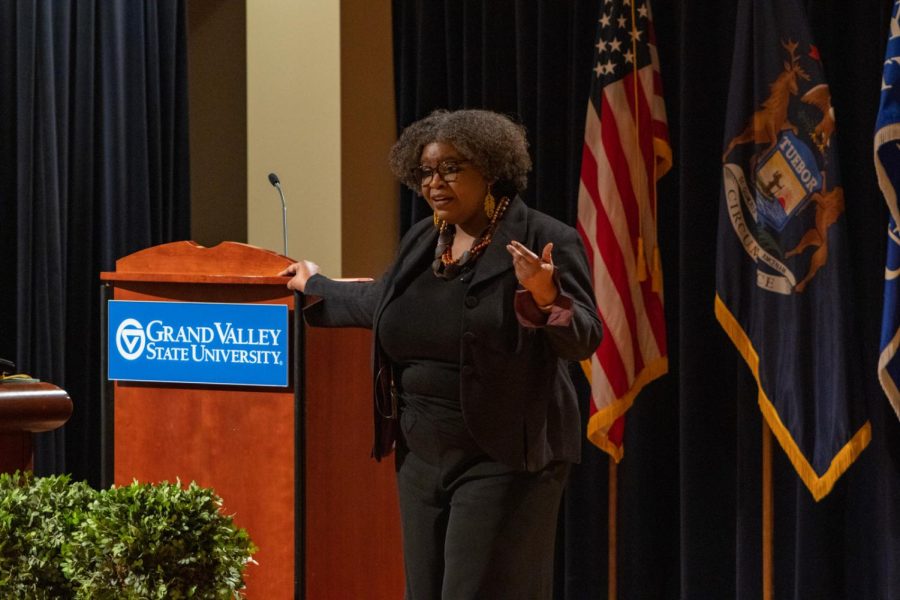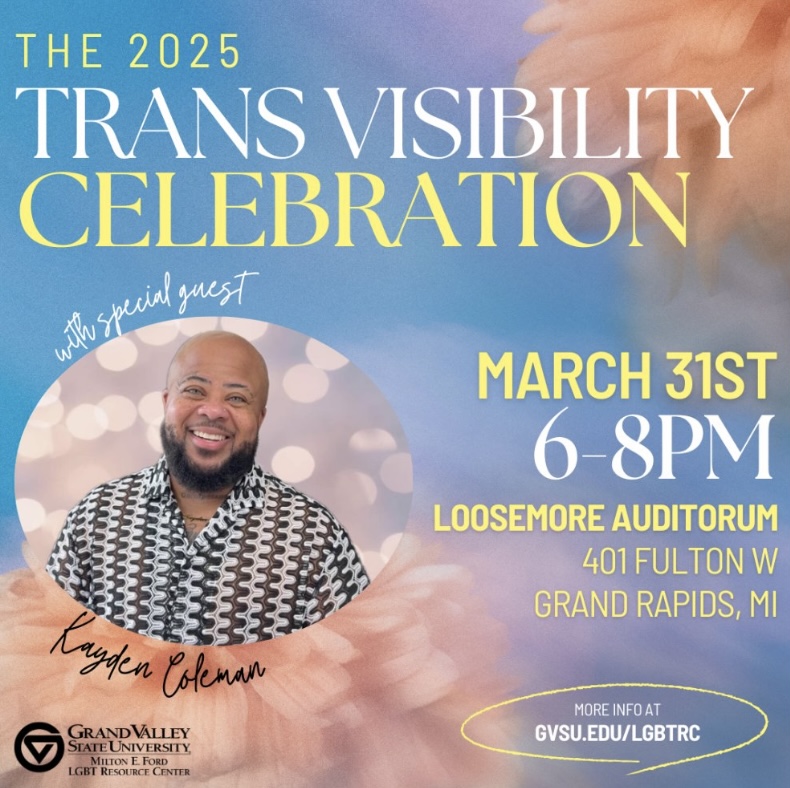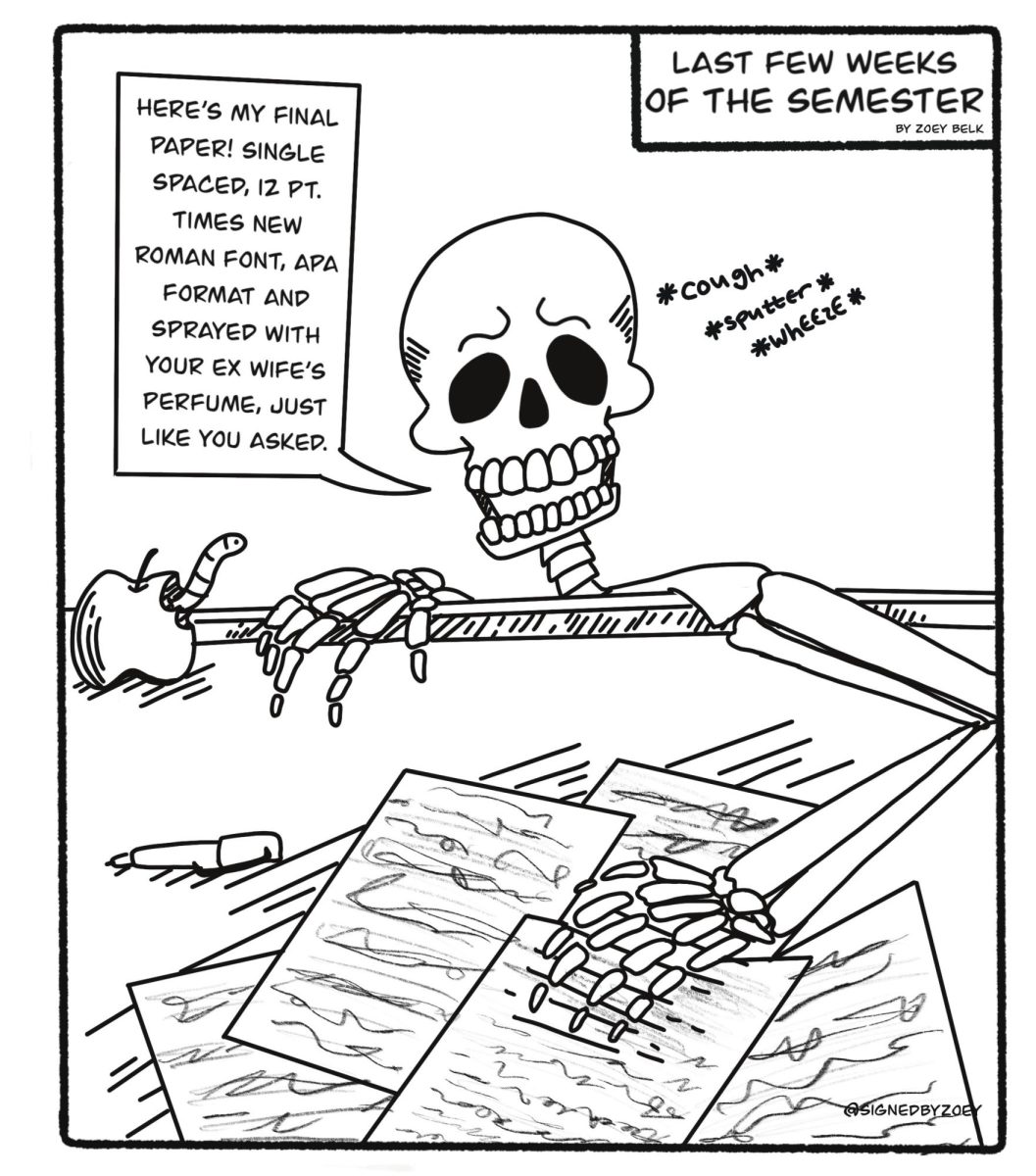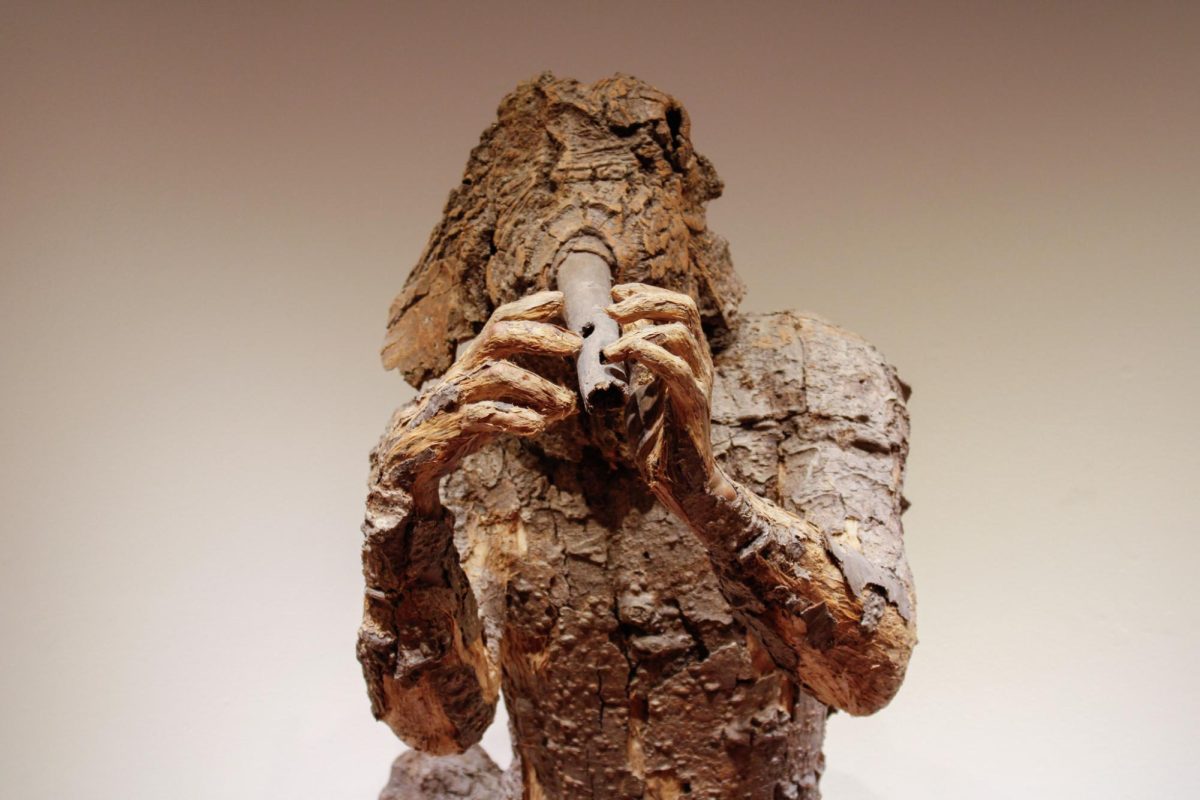Guest speaker advocates for diverse and indigenous art in VMA dept.
Mar 27, 2023
This past week, the Grand Valley State University Visual Media Arts Department (VMA) welcomed design anthropologist and Dean of Faculty of Design at Ontario College of Art & Design (OCAD) University, Dori Tunstall. OCAD University is the largest art and design institute in Canada and the fourth largest in North America.
Among these things, Tunstall is also a writer and educator. Her visit was centered around her new book, “Decolonizing Design: A Cultural Justice Guidebook.”
Tunstall’s book discussed important topics around the gentrification of art and its persistence through many centuries. It highlights key factors within diversity and inclusion on any school campus.
Tunstall made an appearance at a few events for GVSU during her visit, the first of which was a VMA luncheon held at Calder Art Center Atrium on the Allendale campus. This event was open to all GVSU students and faculty. The next event was a panel discussion with Tunstall over the topics of decolonizing design, academia and business.
The following night Tunstall gave a formal public lecture for her book and ideas at the Loosemore Auditorium & Regency Room on the Pew campus.
As a dean at OCAD University Tunstall has many responsibilities, but said enjoys her work.
“Basically, I have an opportunity to understand the future before it happens,” Tunstall said. “OCAD University has a very diverse student body and we have built an extremely diverse faculty body over the last six years.”
Tunstall believes OCAD University is one of the few institutions at the forefront of figuring out how to decolonize design. They are working towards creating a space for indigenous sovereignty within the design institution.
At her formal public lecture, Tunstall decided to focus on the first and third chapters within her book. The first chapter of her book is titled, “Decolonizing design means putting indigenous first.” The third chapter is titled, “Declonzing design means dismantling the racist bias in the European modernist project.” Tunstall chose these specific chapters to go over because of the context they provide the reader.
“These two chapters work well together to first provide context for understanding how race operates in a place like the United States or even Canada and then chapter three is how racial structures get embedded within design, excluding certain bodies,” Tunstall said.
Tunstall identifies a hierarchy of design as a stepping block for other indigenous forms of art and design. She said she feels this type of art gets less exposure and respect than European or Japanese art.
“We normally refer to the story of design as something that happened in 1800’s Europe and everything else is craft or whatever else,” Tunstall said.
Tunstall got into art and design because of how the space broadens the mind and can adjust how people think.
“Art and design broadens the imaginations of people, therefore expanding what is possible,” Tunstall said. “Art focuses in some ways on asking difficult questions about who we are and how we engage in this world. That process of expansion and possibility is the joy that art and design brings.”
Students had positive reactions to the conversation that Tunstall had offered, highlighting her enthusiasm and in-depth research on the topic.
























